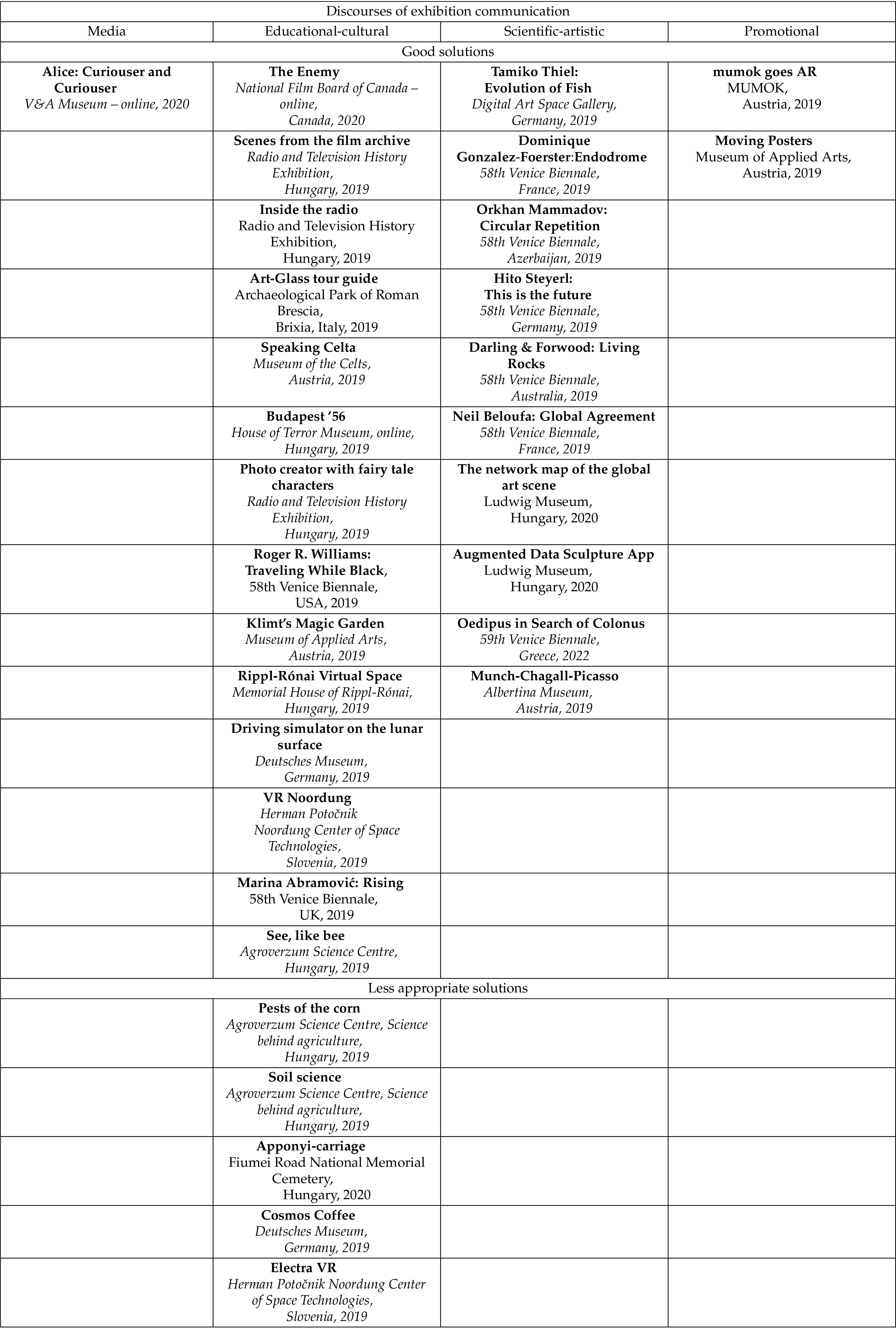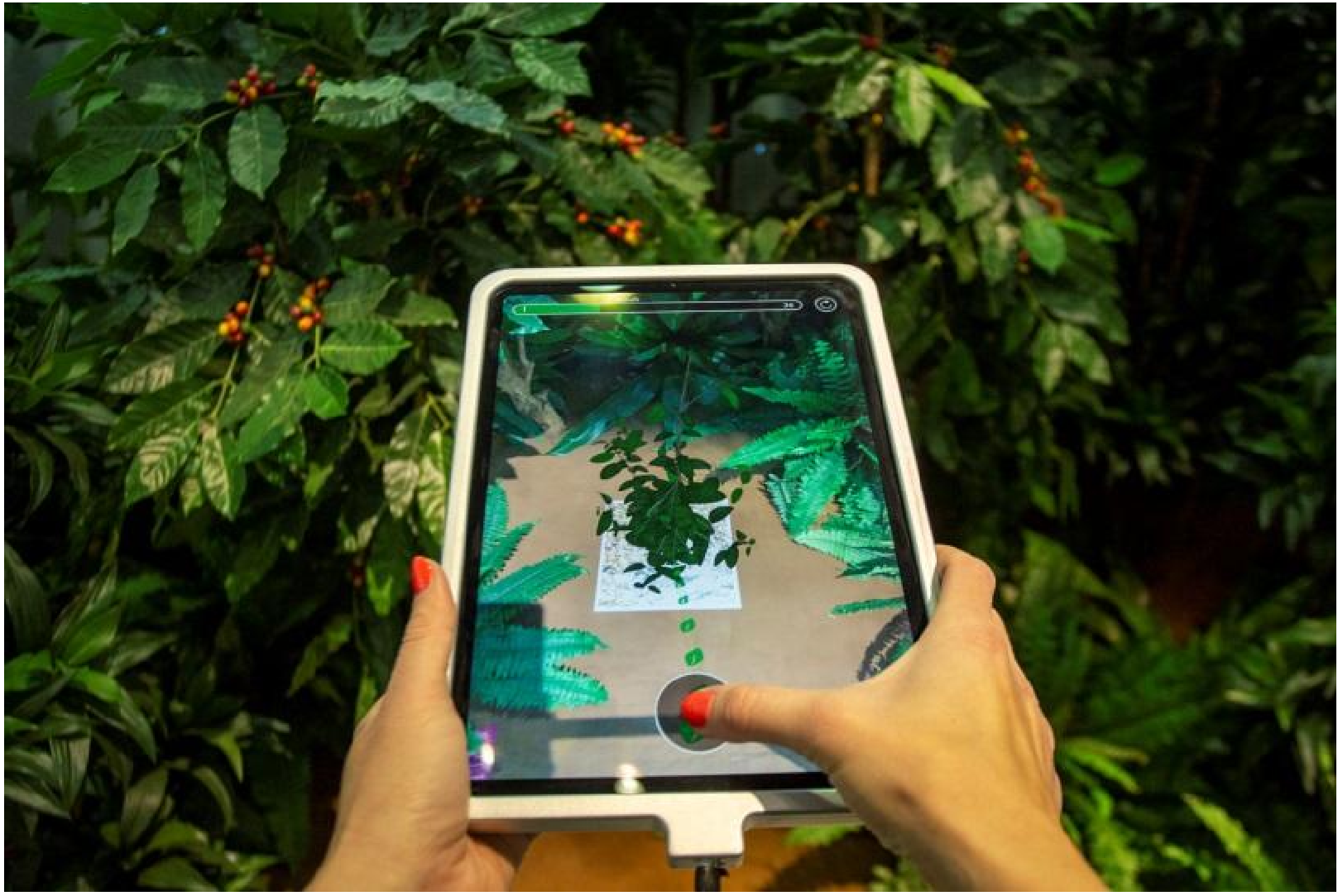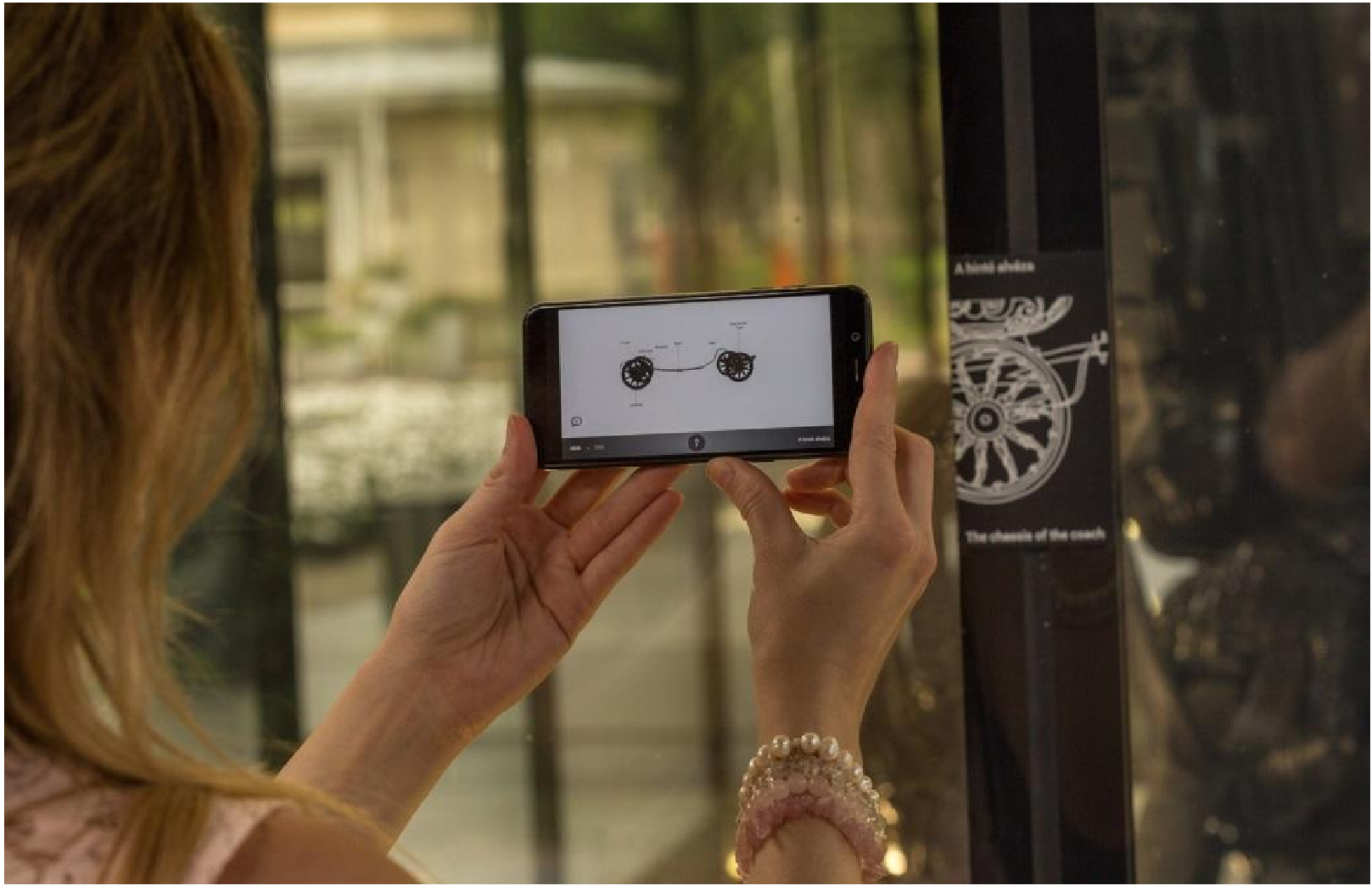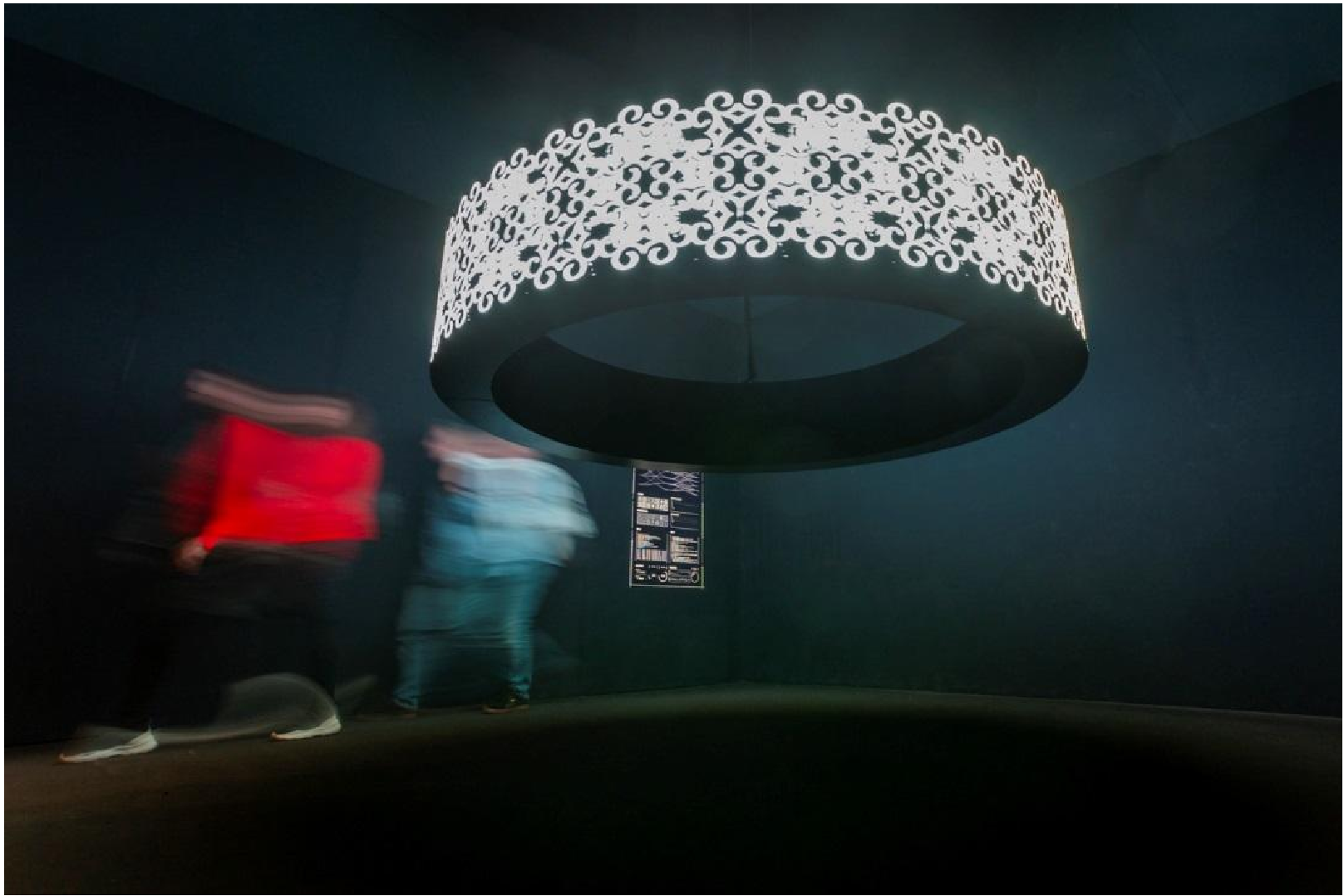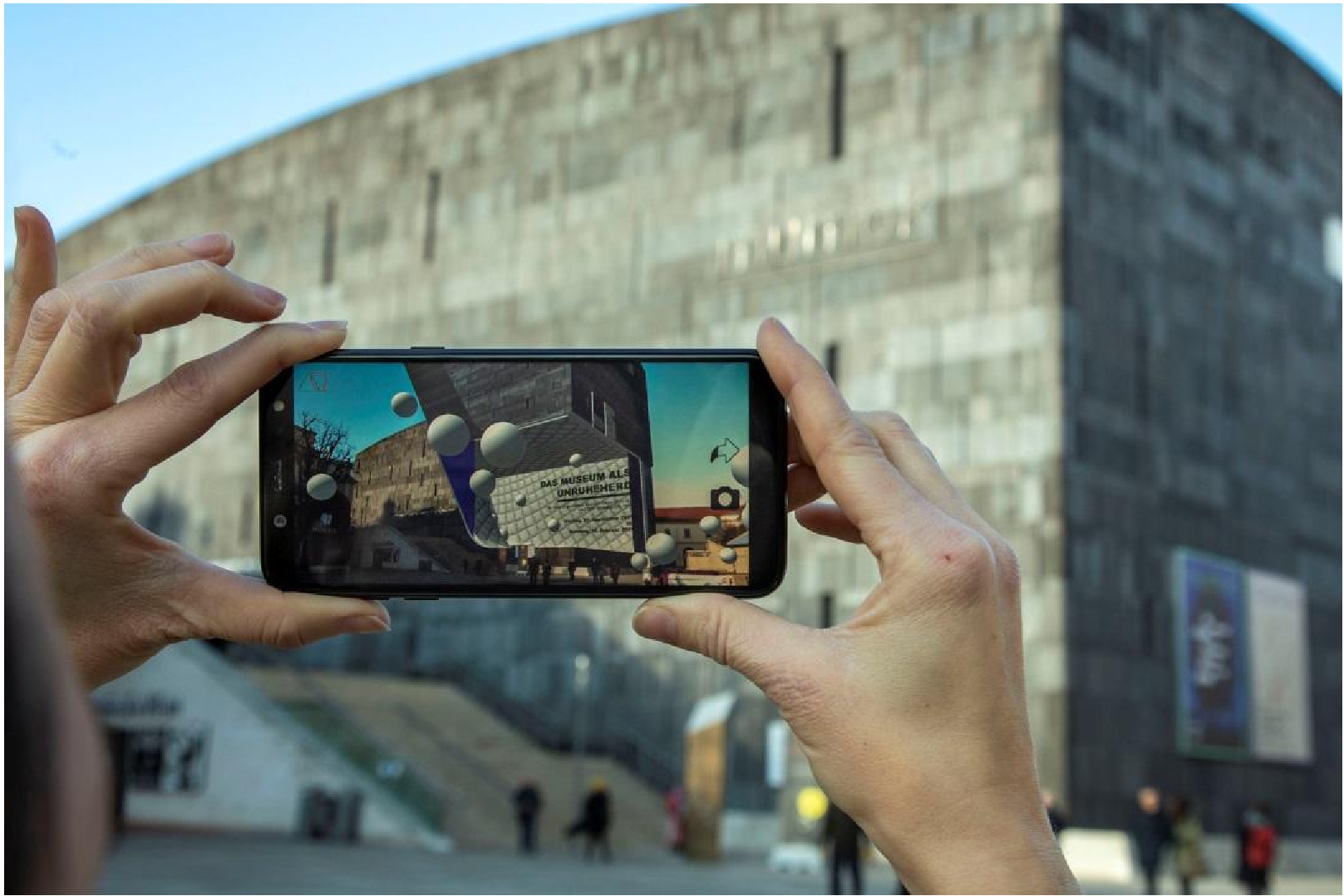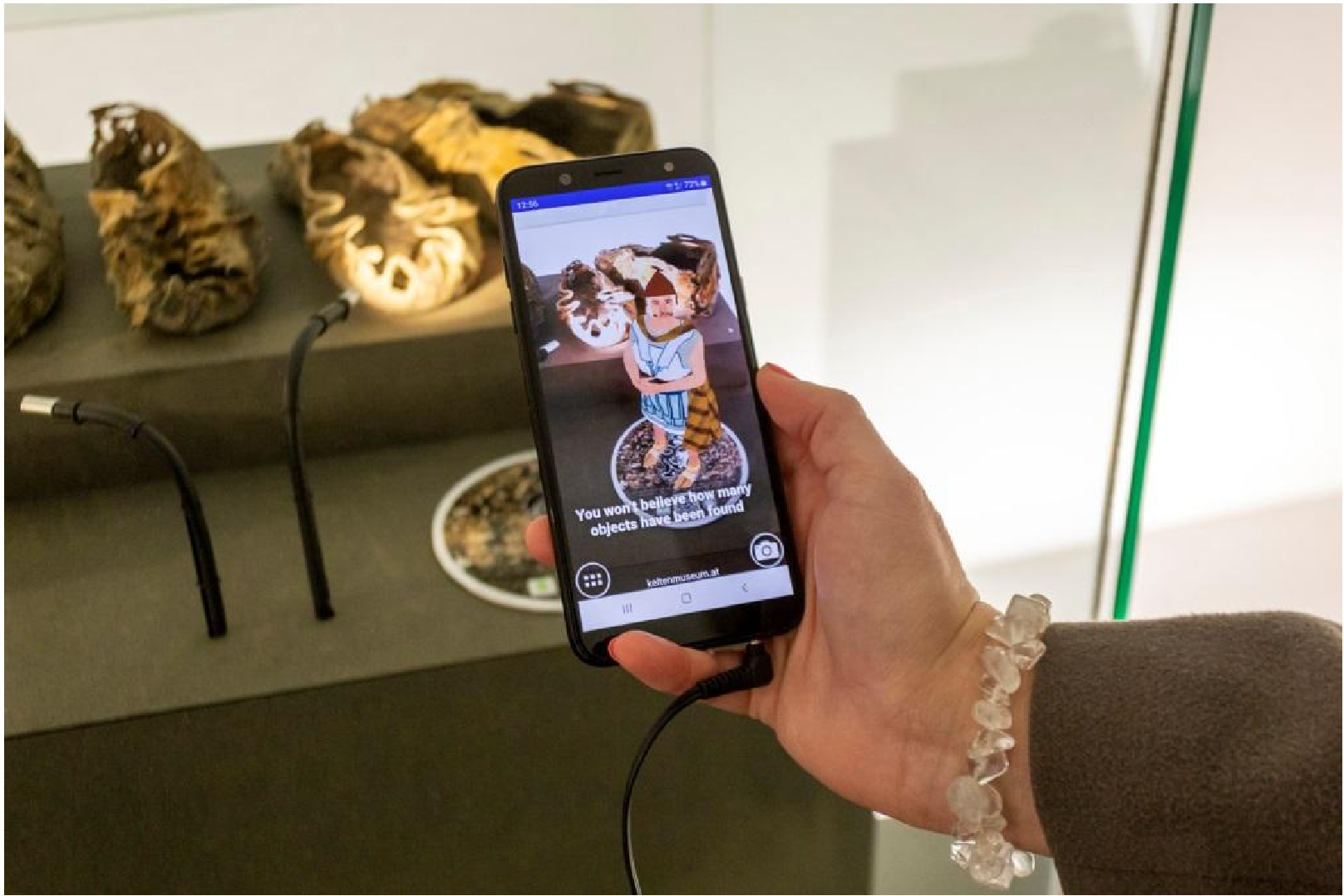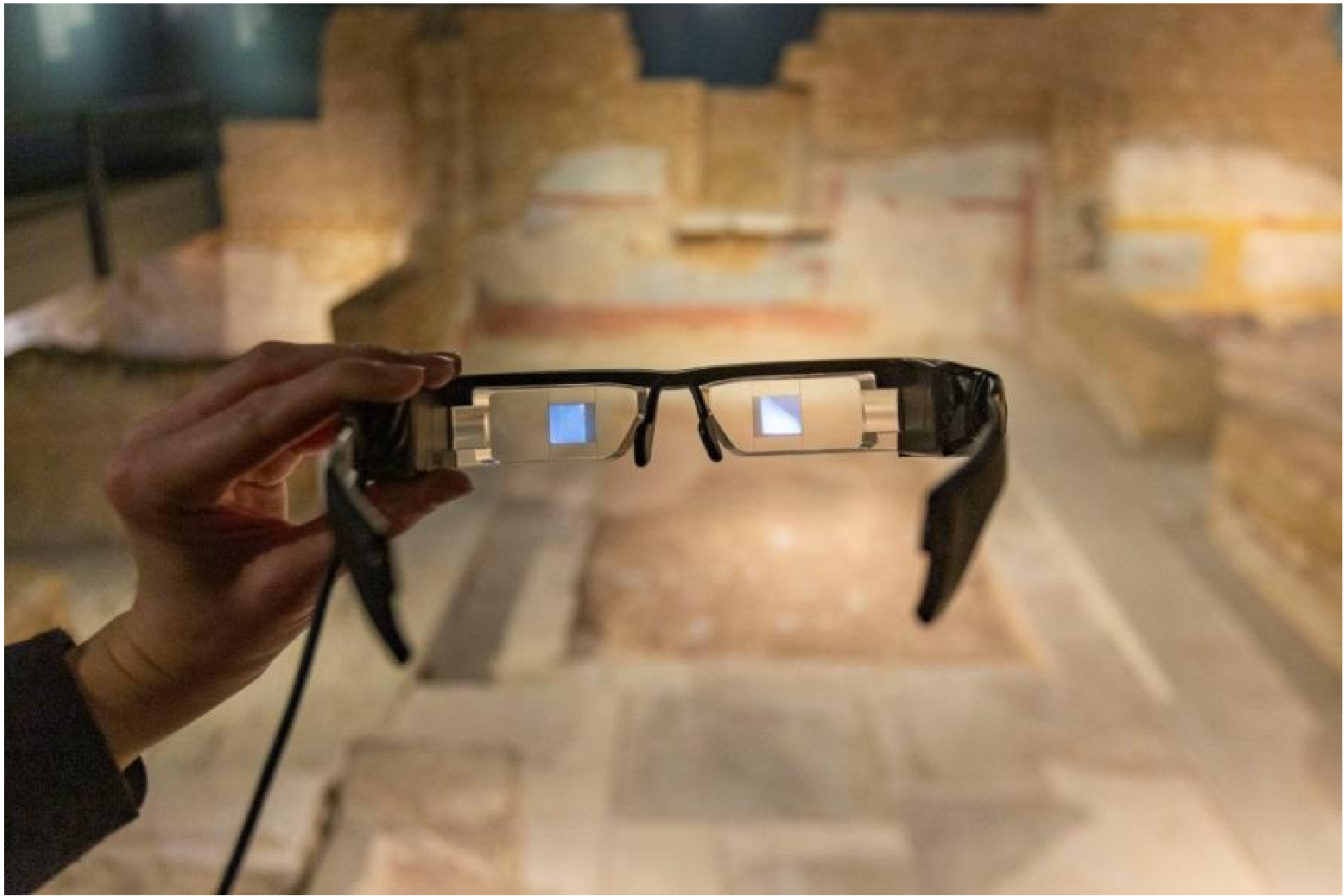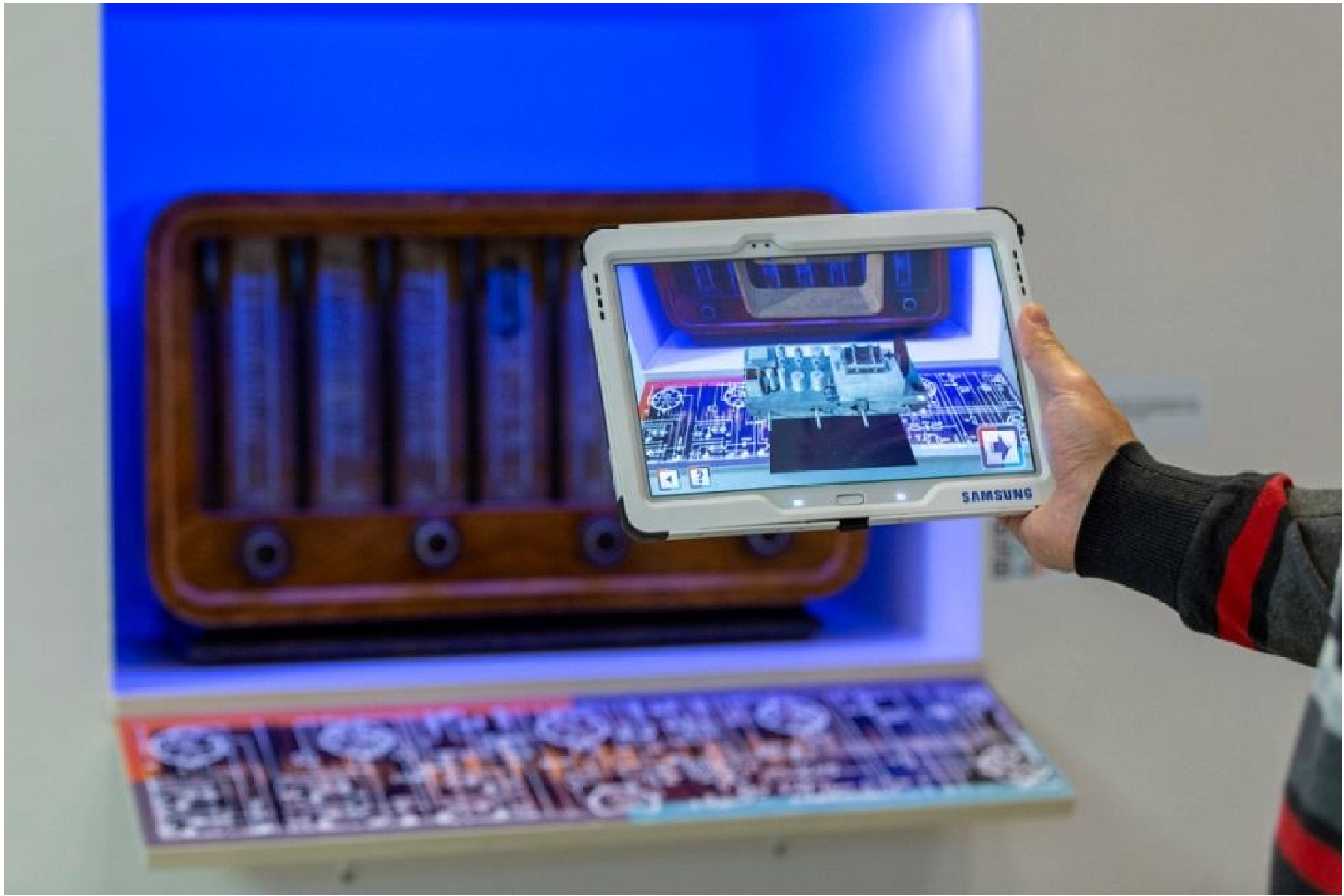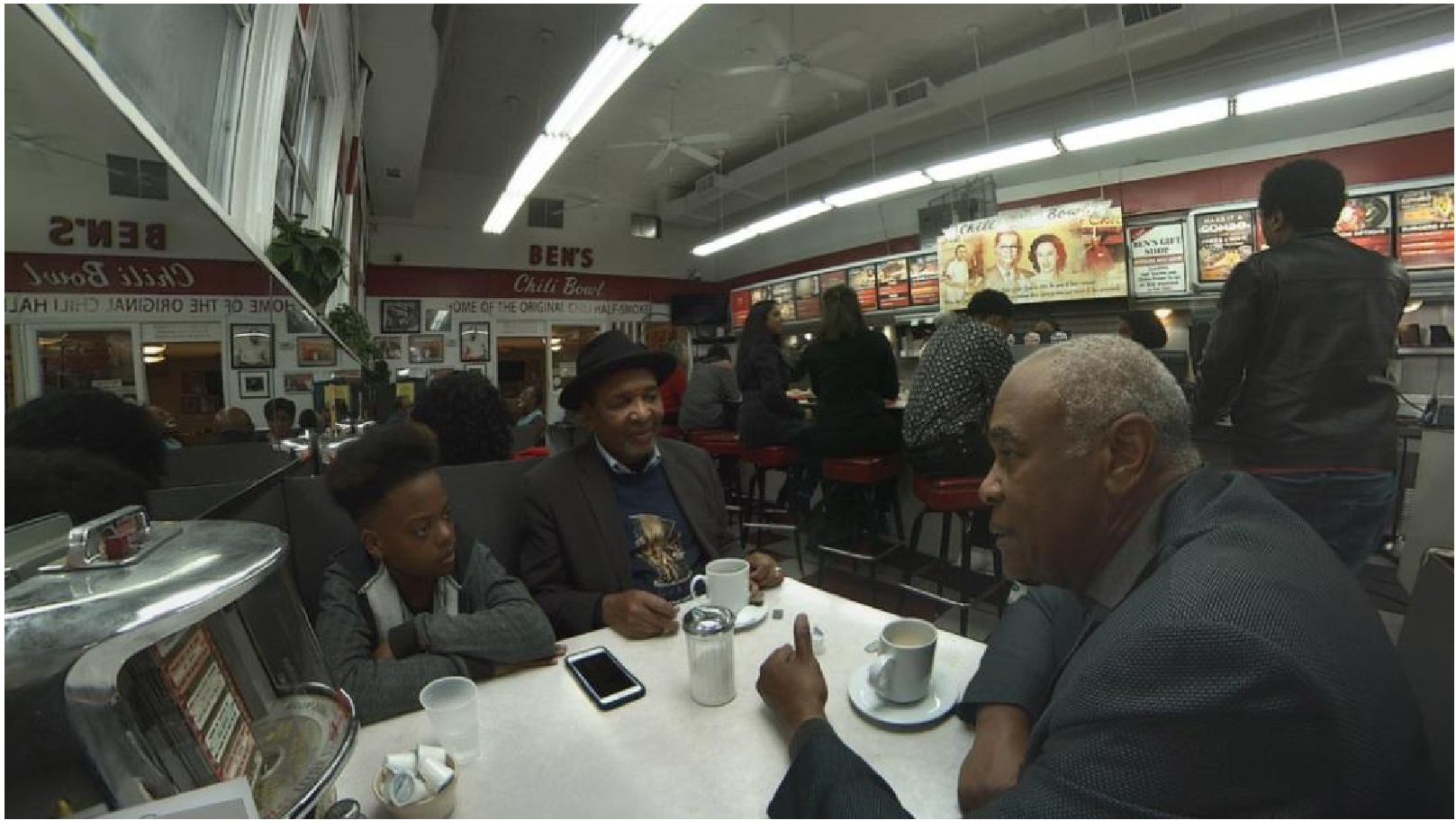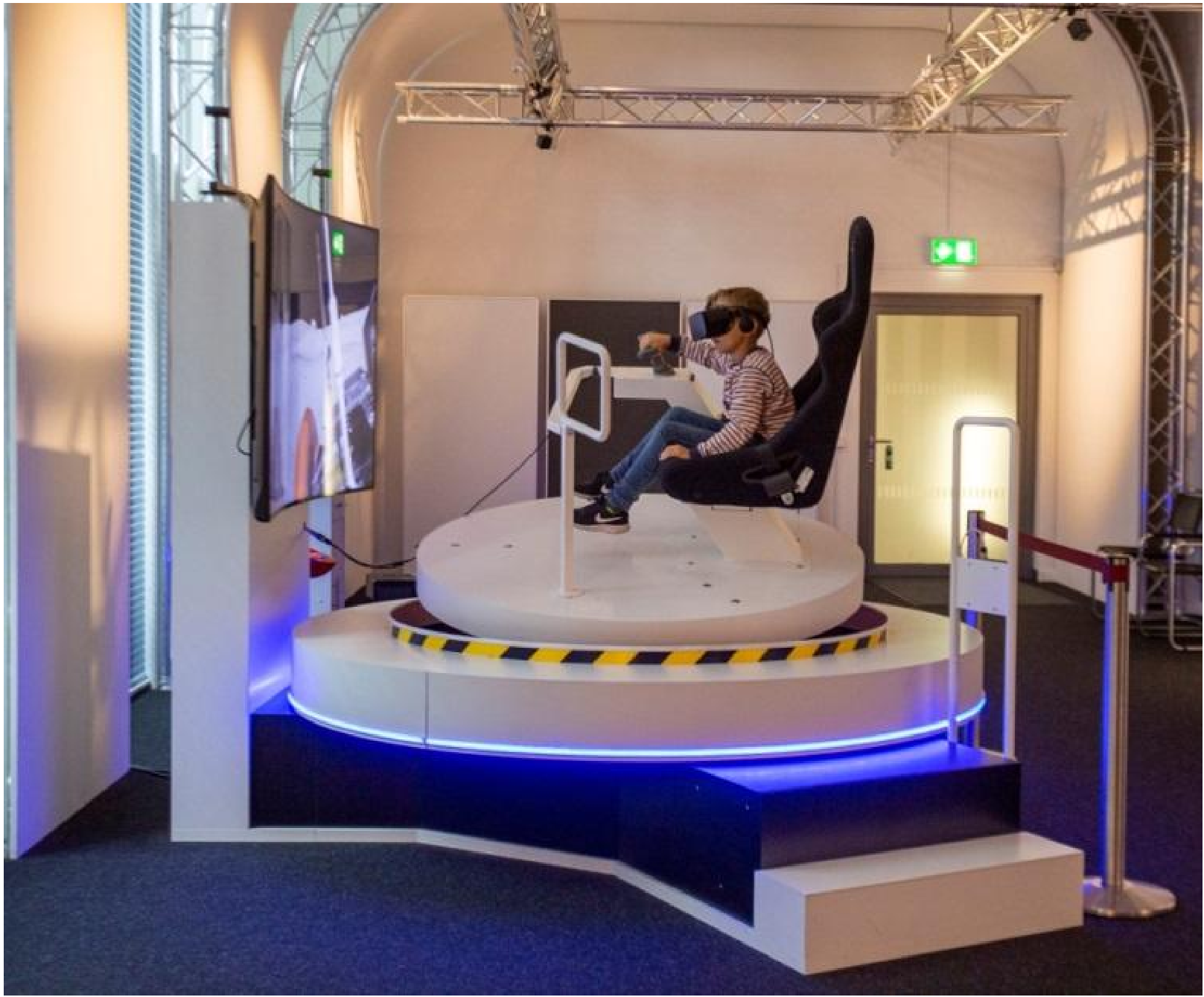1 Theoretical background for analysing AR/VR museum communication applications
According to Michel Foucault and Miskowiec [ 1986 ], space has a unique role and history in the experience of the environment. In Foucault’s theoretical approach, the museum is a special space, a heterotopia: an endless, indefinite accumulation of time in a single, motionless place. Hooper-Greenhill [ 1990 ] assumes that the three levels of the spatial distribution of Foucault’s model [ Foucault, 1994 ] can also be applied for museums. The primary spatial level is the museum’s collection building and the meaning-making practice, that is, the method of selecting the tangible objects that make up the collection. The process itself is based on the classification of the visible properties of objects and things, which, in her opinion, hinders the development of the humanities in the museum, as it hides non-material connections and creates a dependence on the information and database accompanying them. Secondary spatiality in the museums may stand for a multitude of frameworks for articulating knowledge. The exhibition, the presentation of objects as the primary way of transferring knowledge, is typically based on the principle of visibility. Thus, the three-dimensional and philosophical connections between objects usually remain hidden, or we may only get to know them through a single viewpoint, such as that of the curator, structuring the context that brings us into contact with the exhibits. The key role of these viewpoints in knowledge production lies in the fact that the size of space allows only a certain number and size of curated objects to be displayed, which limits and influences the organization of the conceptual content of the exhibition. The tertiary spatial structure is created by the social processes within which specific practices related to the museum appear and function.
1.1 Discourse of the museum communication
Cecilia Lazzeretti [ 2016 ] identified independent but partially overlapping discourses in museum communication. Traditionally, the scientific-artistic discourse has produced content knowledge. Man-made and natural objects are described, works are discussed, and current issues of art and science described. In the media discourse, press materials and publications are produced. The promotional discourse’s main goal is to draw attention to the exhibitions, which the institution would like to promote or increase the number of visitors.
Lazzeretti’s division can be completed by an educational-cultural discourse, including online or personal presence-based communication between all museums and visitors, as shown in Figure 1 .
In this study, we collected a large sample of museum-based AR/VR applications to show how the museum communication categories of Lazaretti, completed with our new category (educational and cultural discourse) may be utilized to design meaningful and effective cultural communication tools for museums and galleries.
1.2 Digital museum applications
In 1994, Ben Davis [ 1994 ] postulated that the greatest benefit provided by digital museums will be that society learns to value handmade objects and the values they represent. This idea is somewhat contradicted by the views of the Dutch philosopher, Peter-Paul Verbeek [ 2011 ], who thinks that the complex connection between humans and technology does not pose a threat to culture, but instead presents an opportunity to improve our quality of life and shape our identity through it. Andrea Kárpáti [ 2013 ] comes to a similar conclusion when studying information technologies related to museums. According to her, computer programs will not only fail to replace real museum visits, since they were never intended to do so, but on the contrary, because of technology, discovering a museum’s digitized collection may even encourage members of a generation who would otherwise be unlikely to consider a museum visit. In the opinion of Kárpáti, the first decades of the 21st century will support the new culture of visual communication called the “ iconic turn ”, which is precisely the result of the increased use of ICT tools. On a technological level, this means a variety of touchscreen solutions, information consoles in exhibition spaces, and in homes, applications that can be installed and downloaded on desktops along with hypermedia content. According to Zsófia Ruttkay and Judit Bényei [ 2018 ], we are currently witnessing a tsunami-like development of digital devices, as a result of which portable and mobile devices have not only become cheaper, but also more efficient, in addition to being equipped with cameras and a range of different sensors. What is more, thanks to continuous Internet connection, “objects” can now communicate and exchange information with each other. As Ruttkay puts it, the “temples of cultural heritage“, starting from the roots of the Gutenberg galaxy, now must redefine themselves in the Neumann galaxy, while being aware that technology is changing at a faster pace than ever before, but, in the words of Maarten Okkersen [ 2012 ], it still remains human.
Modern technologies like mobile or wearable devices, offer “ new ways for the people to connect with their environments and share their experiences ” [ Hughes & Moscardo, 2017 , p. 47]. The technological development changed museum-goers’ habits of content consumption. It has become important for the visitors " to be able to make selections according to their interests " [ Barbosa, de Saboya & Bevilaqua, 2021 , p. 13] as a result, the primary purpose of these visits is no longer to gain information, but rather to gain experience or encounter a special culture.
Contemporary multimedia systems, especially [augmented and virtual reality devices that enable virtual presence, provide a psychological experience that plays a key role in immersive experience.
The term “ Virtual Reality ” was first used by Jaron Lanier [ Aczel, 2017 ] during a 1989 interview. However, the invention of these systems today can rather be seen as a process, in contrast to an event that could be linked to a specific point in time. Many authors date the starting point of this development from the 1962 patent registration [ McLellan, 2004 ; Mazuryk & Gervautz, 1996 ; Biocca, Kim & Levy, 1995 ] of the Sensorama device by the cinematographer Morton Heilig. From a technological history standpoint, 1965 was a significant year: Ivan Sutherland presented the first Head Mounted Device [HMD] which was able to follow head movements [McLellan, 2004 ]. In 1975, in a video image recognition system by Myron Krueger [ 1983 ], which he called Artificial Reality , silhouetted figures of users displayed using a projector were able to interact with objects on the optical instrument [Mazuryk & Gervautz, 1996 ]. According to Hilary McLellan [ 2004 ], tools based on this early technology were soon included in museum exhibitions and educational programs, including the National Hockey Museum and the Oregon Museum of Science and Industry.
The close and early connection between scientific data visualization, education, and virtual technologies is also well illustrated by the fact that in 1990, augmented reality technology itself is introduced through the example of an educational program [ Feiner, Macintyre & Seligmann, 1993 ]. The soaring technological development of communication tools coincided with the arrival of the Google Art Project , which, while carrying fewer technological innovations than the examples mentioned earlier, may even have a symbolic starting date for the mass spread of technology in exhibition communication. Based on the study corpus and their role in exhibition communication, applications using the technology can be divided into five groups: games, educational programs, exhibition tour guide, individual artistic vision, and virtual visit applications . In this paper, we will give examples for all of these and discuss their role in museum communication.
2 Research sample
The study is based on the evaluation of 32 augmented and virtual reality exhibition applications documented from 12 countries and 17 institutions.
In terms of technical solutions, the applications may be divided into four categories (Table 1 ). Installations in museum space are special constructions to house the VR applications that were conceived and installed as part of the curatorial concept of the exhibition (Figure 2 ; Figure 3 ). The virtual reality toolset includes custom-designed headsets and manual manipulation devices as well. For the use of mobile AR applications we only need ordinary, commercially available tablets and smartphones. Some of the augmented reality-based devices are implemented on AR glasses (smart glasses) .

When selecting the AR/VR applications installed in European museums for our study, our first criterion was diversity by museum size and exhibition theme . We wanted to demonstrate that AR/VR technology is becoming an important communication and explanation device in a wide range of institutions. Therefore, we did not restrict our investigations to art galleries, but we also targeted museums of science and technology, and regional or (inter)national cultural history. Our sample included the convenience criterion, too: institutions at the edge of the continent could not be visited. To compensate for this, we visited several multicultural exhibitions, showing objects from a wide range of countries (Table 2 ).
3 Methods
Data were collected through participant observation of AR/VR applications [ Biaett, 2018 ]. Museum visits that included a guided tour to get acquainted with the curatorial concept and the traditional and digital explanatory tools, and a second visit that focused on the AR/VR applications only. We observed our own reactions and also studied the audience. In some cases, we were able to use visitor survey instruments to evaluate audience response and knowledge retention.
The applications were evaluated through the following criteria by two independent experts: interactivity, technical standard, authenticity, communicative values, and visitor experience. Criteria were selected through a survey of literature assessing current multimedia applications in museums [ Carreras & Rius, 2011 ; Damala, Ruthven & Hornecker, 2019 ; Barbosa et al., 2021 ; Morais et al., 2022 ] and the analysis of prize-winning digital explaining tools [ AVICOM, n.d. ; HiM, n.d. ].
The interactivity criterion involved functions that help establish a human-machine relationship. By authenticity , we meant the key qualitative criterion of the applications: do they correspond to values accepted by society and represented by professional communities? When we evaluated the technical standard , we examined the conditions related to the design, implementation, and usage. In an optimal case, a contemporary multimedia application enhances the user experience. The application carries communicative value for exhibition communication, if it helps create a common culture and establish a relationship between the individual and the community by embedding the cultural experience gained during use and providing interpretive strategies. The application provides high-level visitor experience if it enhances the effects of the objects exhibited with added meaning, valuable interpretation, and new aesthetic insights or enhanced visual effects.
Figures 2 and 3 show some examples of the application types. Figure 2 , an application integrated into a spatial installation is shown, which was set up and exhibited in a purpose-built physical environment to enhance user experience and engagement.
Two of the VR applications showcase visual content generated by artificial intelligence software on a traditional projector or display, as shown in Figure 3 .
4 Results and discussion
In Table 3 , we present an overview of our research data. AR/VR applications are grouped according to the exhibition communication discourse they represent. The theoretical basis of our assessment system was the work of Cecilia Lazzeretti [ 2016 ] on discourses in museum communication, briefly introduced earlier. She identified independent but partially overlapping discourses and their functions: the scientific-artistic discourse responsible for content knowledge; the media discourse that covers exhibition in a more superficial style focusing on the transmission of audience reactions and criticism. The promotional discourse conveys basic visitor information and draws attention to features of popular interest. We completed this categorization system with the educational-cultural discourse , including online or personal presence-based communication between all museums and visitors, as shown in Figure 1 .
We qualified those applications as good solutions , that contributed considerable new insights and/or enjoyment to the visitor experience. These were not flawless technically, (mainly due to the novelty of the technology), but their educational and technological innovative value was high. We considered those applications less appropriate , which did not convey innovative museum communication methods and/or did not transmit knowledge and aesthetic appeal that could not have been transmitted through traditional tools with equal effect.
Technical problems that we experienced with the functionalities of the applications were also results of the fast software development to serve one exhibition only. These applications are rarely developed through iterative methods that involve cycles of corrections. They usually employ the waterfall software development method [ Mateen, Azeem & Shafiq, 2016 ] which employs a limited number of pilot tests and audience response surveys. An good example of a mistake caused by the lack of testing would be the user problems associated with the AR application that guides visitors through the Munch-Chagall-Picasso exhibition at the Albertina Museum in Vienna, Austria. Hand trembling of the user or another visitor passing nearby could cause turbulence that often resulted in sudden stops and restarts of the animation. In the limited number of pre-opening trials, this flaw was not observed. The same framework was used for the Moving Posters application at the Museum of Applied Arts in Vienna, where high visitor numbers made smooth use of the app very difficult.
Mistakes associated with content development may result from the novelty of the technology. Developers are sometimes unaware of the differences in visual processing of the images in an AR/VR application and in a two-dimensional digital guide. in the Pests of the corn and the Soil science apps, graphic designers simply transferred graphs and other illustrations from printed information materials and learning tools to the virtual three-dimensional environment, where the poster-like images were difficult to view and almost impossible to interpret. These applications, generally viewed on the small screen of a smartphone, are not adequate for the transmission of information conveyed in small print and reduced image size. Visitor enjoyment is also minimised by such solutions, as the expected effects of AR/VR technology: surprise, amazement and aesthetic appeal are missing (see Figure 4 ).
The development of an AR/VR guide is expensive, therefore its explanatory function should be clarified in advance. An example for a spectacular, but meaningless application was the Electra VR. In this app, the only interactive function with the planets of the solar system available for users had no scientifically grounded message. The functionality enables the viewer to extract one of the planets and launch it into space. The planet will quickly reassume its original position. The communication objective of this application was unclear and the personnel in the museum could not formulate it either. The quality of interaction also has to be defined carefully. In the simulation device called Cosmos Coffee, the functionalities were understandable, but the interactive quality was very low. Even the youngest visitor may soon loose interest in a tool that can be activated through pushing one button only that made the coffee plant grow. The longer you pushed, the bigger the plant became and the more coffee beans it produced. No other interactive possibility was available, so the information transmission potential of AR/VR technology was under-used and, consequently, the cognitive effects of the tool was minimal (see Figure 5 ).
Another mistake we observed was the inappropriate installation of an AR/VR tool. The idea behind the Apponyi-carriage cannot be adequately realised in an exhibition space. The app helps visitors see an object in three-dimensional, virtual form - right beside the actual, exhibited object. The redundancy of the application was evident because the five-meter-long carriage that appeared on the 9–12 centimeter wide smartphone screens was in a format that was much more difficult to view than in real life, in the exhibition hall. The purpose of the app could have been to provide explanatory text for the different parts of the vehicle, but the information provided contained in almost illegibly small lettering (see Figure 6 ).
In the next part of our paper, we discuss some of the well-designed and sophisticated in terms of knowledge transfer and aesthetic appeal multimedia applications from the corpus. Here we will employ the categories of the museum communication discourse discussed earlier in the first section dealing with the theoretical background of this research.
4.1 Scientific or artistic discourse
Rather than expanding or enhancing the visitor’s experience, the main task of contemporary multimedia, when applied to exhibitions, is to provide essential representations or expressions of the artistic concept itself. These works of art are multimedia pieces, and virtual technologies are integral parts of the artwork.
The virtual reality installation designed by Hito Steyerl, where the artist sets up a futuristic, imaginary, virtual garden where plants are generated by a software using artificial intelligence, as shown in Figure 3 . The central theme of this creation is the study of the relationship between AI technology and people.
Orkhan Mammadov Azerbaijani, a new media artist designed an installation which is based on a machine learning algorithm that generates patterns which are similar to traditional ornamental motifs used in Azerbaijani arts. These patterns, however, are artificially generated and never existed in folk art. The question posed and left open by the artist is, does AI merely imitate, and thereby falsify culture by creating meaningless synthetic symbols or, on the contrary, does it become a culture creator without an entity? (see Figure 7 ).
4.2 Media discourse
As a teaser for the exhibition of Alice: Curiouser and Curiouser , at the Victoria and Albert Museum in London, a unique virtual event was created. The occasion was reminiscent of a virtual press conference, where the curator of the exhibition, more precisely its virtual avatar, introduced the main attractions of the show. Participants joined with VR glasses, and, just real-life press conferences, were able to take a 360-degree look around in the virtual space, inspired by the novel Alice in Wonderland , as shown in Figure 8 . Several other well-known scenes from the novel appeared during the event as well. For example, at the beginning of the conference, the audience virtually descended into a rabbit hole.
4.3 Promotional discourse
In the augmented reality-based advertisement of the Museum of Modern Art (MUMOK), Vienna, the structure of the museum was used as a traditional brand-building communication tool to launch virtual content, as shown in Figure 9 . The smartphone, after recognizing the building, launched a variety of spectacular animations that drew attention to a museum program.
4.4 Educational or cultural discourse
We have identified six areas where the use of contemporary multimedia applications could be particularly effective: guided tours of exhibitions; presenting complex scientific concepts; arts education; engagement enhancement; sensitization to social issues and evoking positive emotions towards sciences.
In Austria, at the Museum of the Celts in Hallein, a smartphone AR application was designed for children and youth, as shown in Figure 10 . The protagonist of the app, Tobico, is the avatar of a Celtic warrior who is also a former “owner” of some museum items. At the exhibition, Tobico tells personal stories about how his family used these objects, and how they used to live in the exhibited spaces.
At the Brescia Romana Archaeological Park in Italy, visitors can view the exhibition through AR glasses. During the guided tour, the device displays narrated animations on the surface of the glasses, allowing a simultaneous view of the excavated archaeological remains and their reconstruction, too, as shown in Figure 11 . Even though the resolution and refresh frequency of the glasses is not ideal, and their use is tiring for the eye, if the quality improves over time and the prices of these devices decrease, this technology could fundamentally transform the way damaged objects and ruins are experienced. The simultaneous observation of remains and reconstructions significantly enhances the visitor experience and provides important insights into the aesthetic qualities of the objects and building.
Museums can use contemporary technology to present complex scientific data or phenomena from a new perspective. The application of the Budapest Radio and Television History Exhibition , “ A look inside the Radio ” helps the visitor to understand the functioning of the machine. This tool allows viewers to take a virtual look inside an old radio set. When using the application, 3D animations show the components of the device and their functions, as shown in Figure 12 . With the software, visitors are virtually able to assemble the individual components using the multi-touch interface, which input interface is more user-friendly since it "allows completing tasks more accurately in fewer moves" [ Muender et al., 2019 , p. 12].
At the Museum of Applied Arts (MAK) in Vienna, the visitor can uniquely meet the artistic world of Gustav Klimt, master of Art Nouveau. With the help of the museum’s VR device, we can virtually explore Klimt’s magical world in 3D. In his imaginary virtual garden, animate and inanimate objects appear as if in the mind of Klimt. With the VR tool, we can take a 360-degree look around, move in the virtual space, and even interact with certain objects. These experiences allow for a virtual encounter with the world created by the artist that visitors could not experience with traditional exhibition communication tools.
The experience of contemporary multimedia is particularly suitable for highlight various social problems, such as environmental pollution and global warming [ Hill, 2020 ], the situation of oppressed minorities, or humanitarian issues of war conflicts. Roger Ross Williams’ virtual reality technology-based documentary, Travelling While Black aims to fight social exclusion. The film focuses on the difficulties of the African American community in the 1960s. The VR glasses allow visitors to look around in a photorealistic virtual environment, giving a unique and realistic experience. In several scenes in the documentary, the viewer sits at the table where the main characters tell their stories. Due to the multimodal nature of VR, this solution adds new layers of meaning to communication. In the film, the gesture that we sit at the same table where the protagonists and their families do, is a symbol of reconciliation, facing problems, and accepting the other as an equal partner, as shown in Figure 13 . That new experience enabled visitors critically reflect on their decisions [ Morais et al., 2022 ].
Experience shows that contemporary multimedia can help exhibition developers find the right balance between entertainment and the dissemination of scientific knowledge. It can also help create positive experiences for museums and exhibitions. For example, the Deutsches Museum in Munich has introduced a unique multisensory VR simulator in which visitors can drive a virtual moon vehicle used during the Apollo space program, as shown in Figure 14 ). A special feature of the application is that it can also send physical feedback during operation, such as vibration or tilting. At the Center Noordung in Vitanje , Slovenia, a VR aircraft simulator offers a similarly unique visitor experience. The user has to sit in an original jet cockpit to use the application, as shown in Figure 2 .
5 Conclusion
Through virtual presence, contemporary multimedia, can contribute to achieving an exhibition’s communication goals more effectively, and offer opportunities to present processes and connections that cannot be experienced visually. The multimodal nature of technology is much more complex than that of previous exhibition communication techniques. Together with audiovisual stimuli, AV/VR integrates motor stimuli with metacommunication tools, such as gestures into the process of art appreciation, and thus facilitate the interpretation of a situation or identification with a social dilemma. The technology allows designed sounds and soundscapes to integrate into the exhibition spaces, which enhances the visitor experience and enhances a sense of immersion in virtual environments [ Rudi, 2021 ] as the examples of The Enemy , Marina Abramović: Rising and Roger Ross Williams: Traveling While Black show.
Compared with the previous solutions, an important advantage of this technology is that exhibition communication can be tailored to a specific target audience without significantly changing the curatorial concept. Specific content that is relevant to a particular target audience may be made accessible only for them and placed in an exhibition space in a virtually permanent or temporary way.
Limitations and disadvantages of AR/VR technology are also important to note. This technology requires much more complex tools and software than traditional digital solutions. Therefore, their operation requires constant supervision in most cases. The presence of an assistant needed from an accident prevention perspective and also because the operation of the machinery may surpass the technical knowledge of an average museum visitor. And because most of these hardware devices are wearable or portable, they are much more sensitive to ergonomic deficiencies that can ruin the user experience compared with traditional multimedia devices. Display resolution, image refresh frequency, or simple problems such as the formation of fog on the lens of the virtual glasses due to warm temperature may spoil visitor experience.
Contemporary multimedia have the ability to expand the physical space of exhibitions. This potential provides an opportunity to present content that would otherwise have physical limitations in a traditional physical environment, such as size limitations, extreme storage conditions, or even security risks. The most outstanding applications examined were those that took advantage of this potential of technology and were able to provide alternatives to real physical locations where people “ could share their experiences and various metaphors ”. 1 This was the case, for instance, when the visitor could see the world through the eyes of a bee, or “step into” the world of a painting, and become part of a world invented by an artist. Visitors also may discover and understand physical phenomena they would not have been able to comprehend without the help of the application.
The least efficient applications were those whose primary purpose was transferring information. Such approaches have usually led to the display of texts that were difficult to read as well as misinterpreted figures, the display of which would have been more effective through traditional, printed information devices like wall charts and slide shows. When planning exhibition communication, special attention should be paid to the development of technology-optimized content by professionals.
The examples of Budapest ’56, The Enemy, mumok goes Augmented Reality, or Alice: Curiouser and Curiouser all show that this technology allows the spatial and temporal extension of the exhibition by transporting the museum experience to different parts of the city, where we can view the exhibition even after is closure. In the future, AR/VR applications could also evolve in this direction and support museums to become more relevant community spaces. The evaluation of such advanced applications and their effect on the visitor experience is a research trajectory we intend to follow in the future.
References
-
Aczel, P. (2017). Virtual reality and education - world of teachcraft? Perspectives of Innovations, Economics and Business 17 (1), 6–22. doi: 10.15208/pieb.2017.02
-
AVICOM (n.d.). F@IMP — Festival of Audiovisual and Innovative Museum Media Productions. Retrieved from https://faimpavicom.org
-
Barbosa, M. G., de Saboya, L. A. & Bevilaqua, D. V. (2021). A survey and evaluation of mobile apps in science centers and museums. JCOM 20 (05), A01. doi: 10.22323/2.20050201
-
Biaett, V. (2018). Using Participant Observation with Socially Constructed Grounded Theory Method to Explore On-Site Guest and Visitor Behaviour. In Handbook of Research Methods for Tourism and Hospitality Management (pp. 157–165). doi: 10.4337/9781785366284
-
Biocca, F., Kim, T. & Levy, M. R. (1995). The vision of virtual reality. In Communication in the age of virtual reality (pp. 3–14). Lawrence Erlbaum Associates, Inc.
-
Carreras, C. & Rius, J. (2011). Evaluation of ICT Applications in the New Lleida Museum, Spain. Visitor Studies 14 (2), 219–232. doi: 10.1080/10645578.2011.608025
-
Damala, A., Ruthven, I. & Hornecker, E. (2019). The MUSETECH Model: A Comprehensive Evaluation Framework for Museum Technology. Journal on Computing and Cultural Heritage 12 (1), 1–22. doi: 10.1145/3297717
-
Davis, B. (1994). The digital museum. Aperture 136 , 68–70.
-
Feiner, S., Macintyre, B. & Seligmann, D. (1993). Knowledge-based augmented reality. Communications of the ACM 36 (7), 53–62. doi: 10.1145/159544.159587
-
Foucault, M. (1994). The birth of the clinic: An archaeology of medical perception . USA: Vintage Books.
-
Foucault, M. & Miskowiec, J. (1986). Of Other Spaces. Diacritics 16 (1), 22. doi: 10.2307/464648
-
Heilbrun, A. (1989). Virtual Reality: An interview with Jaron Lanier. Whole Earth Review 64 , 108–119.
-
Hill, S. H. (2020). A Terrible Beauty: Art and Learning in the Anthropocene. Journal of Museum Education 45 (1), 74–90. doi: 10.1080/10598650.2020.1723357
-
HiM (n.d.). Heritage in Motion Awards Competition. Retrieved from https://heritageinmotion.eu
-
Hooper-Greenhill, E. (1990). The space of the museum. Continuum 3 (1), 56–69. doi: 10.1080/10304319009388149
-
Hughes, K. & Moscardo, G. (2017). Connecting with New Audiences: Exploring the Impact of Mobile Communication Devices on the Experiences of Young Adults in Museums. Visitor Studies 20 (1), 33–55. doi: 10.1080/10645578.2017.1297128
-
Kárpáti, A. (2013). Multimedia in museums. In A. Kárpáti & T. Vásárhelyi (Eds.), Exhibition communication (pp. 172–219). Eötvös Loránd University.
-
Krueger, M. W. (1983). Artificial reality . Addison-Wesley.
-
Lazzeretti, C. (2016). The language of museum communication: A diachronic perspective . U.K.: Palgrave Macmillan.
-
Mateen, A., Azeem, M. & Shafiq, M. (2016). AZ Model for Software Development. International Journal of Computer Applications 151 (6), 33–36. doi: 10.5120/ijca2016911701
-
Mazuryk, T. & Gervautz, M. (1996). Virtual Reality History, Applications, Technology and Future (tech. rep. No. TR-186-2-96-06). Institute of Computer Graphics and Algorithms, Vienna University of Technology. Retrieved from https://www.cg.tuwien.ac.at/research/publications/1996/mazuryk-1996-VRH/
-
McLellan, H. (2004). Virtual Realities. In Handbook of Research for Educational Communications and Technology (pp. 461–497). U.K.: Routledge.
-
Morais, C., Moreira, L., Teixeira, A., Aguiar, T., Coelho, A., Pereira, V., … Rosa, M. (2022). Visitors come to experience science: towards a non-obtrusive evaluation method based on immersive virtual reality. JCOM 21 (01), A04. doi: 10.22323/2.21010204
-
Muender, T., Gulani, S. A., Westendorf, L., Verish, C., Malaka, R., Shaer, O. & Cooper, S. (2019). Comparison of mouse and multi-touch for protein structure manipulation in a citizen science game interface. JCOM 18 (01), A05. doi: 10.22323/2.18010205
-
Okkersen, M. (2012). Technology and the human condition. ESCITE Newsletter 89 , 1–2.
-
Rudi, J. (2021). Designing Soundscapes for Presence in Virtual Reality Exhibitions: A Study of Visitor Experiences. Visitor Studies 24 (2), 121–136. doi: 10.1080/10645578.2021.1907151
-
Ruttkay, Z. & Bényei, J. (2018). Renewal of the Museum in the Digital Epoch. In G. Bast, E. G. Carayannis & D. F. J. Campbell (Eds.), The Future of Museums (pp. 101–116). Springer International Publishing. Retrieved from https://link.springer.com/book/10.1007/978-3-319-93955-1_10
-
Verbeek, P.-P. (2011). Moralizing technology: Understanding and designing the morality of things . USA: The University of Chicago Press.
Authors
Ádám Kuttner is a Ph.D. student at the Doctoral School for Communication and
Sociology at the Corvinus University of Budapest. His research areas are visual
communication and AR/VR technology in museum communication. As a media design
specialist, he currently develops AR/VR programs for museums in Budapest. He has been
a teacher at a media school for two decades and organizes museum programs for
secondary school students and adults.
E-mail:
adam@topschool.hu
Andrea Kárpáti is Professor at the Institute of Marketing and Communication
Science, and Head of the Visual Culture Research Group at Corvinus University Budapest.
Her research foci: visual culture of children and adolescents, digital literacy, museum
learning and STEAM: synergy of science and arts education. She has served 10 years on
the World Council of InSEA with two terms as Vice President and currently leads the
European Visual Literacy Network (
http://envil.eu/
).
Websites:
http://amassprojekt.hu/
,
http://visualculture.elte.hu/
.
E-mail:
andrea.karpati@uni-corvinus.hu




